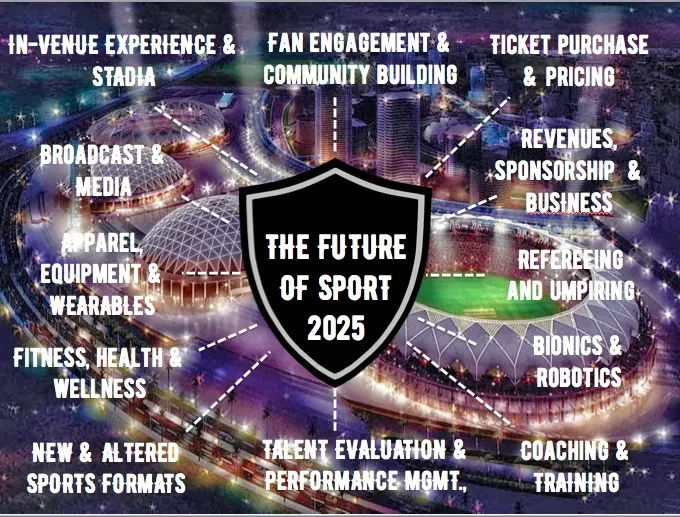Sports 2025 trends are reshaping how athletes train, compete, and recover, signaling a new era for performance. These 2025 sports training trends put personalized programs at the center of practice. Coaches are adopting athlete training methods 2025 that balance intensity with recovery. Wearable tech in sports 2025 is turning sensors into real-time coaching cues. Sports analytics 2025 offer actionable insights, aligning with fitness trends 2025 that emphasize longevity and balanced training.
In other terms, what’s unfolding is a digitally enriched era of sport where training programs are guided by science, data, and continuous feedback. Smart sensors, data dashboards, and coaching methods rooted in analytics work together to optimize preparation and resilience. This holistic approach prioritizes safety, longevity, and accessibility, aligning with how fans and participants engage with sports today. Viewed through an LSI lens, related concepts like performance monitoring, predictive injury risk, and real-time feedback create a cohesive picture of where athletes and teams are headed.
Sports 2025 trends: Personalization, load management, and recovery-driven training
In 2025, training programs are increasingly tailored to each athlete’s physiology, genetics, and daily condition. This shift toward data-informed periodization means microcycles that optimize adaptation while reducing overuse injuries. By prioritizing quality over sheer volume, athletes can progress with clearer, more predictable trajectories, leveraging metrics like heart-rate variability, lactate thresholds, and sleep quality to guide training blocks.
Recovery and fueling are now integral components of the training plan, not afterthoughts. Precise fueling strategies, rest and mobility work, and evidence-based recovery modalities shorten the time between hard sessions and peak performance. The emphasis on sustainable performance mirrors broader fitness trends for 2025, recognizing that longevity and resilience can be as valuable as peak speed or strength.
Wearable tech and analytics: Turning data into practical coaching in 2025
Wearable technology in 2025 focuses on meaningful data that informs decisions rather than chasing every new gadget. Modern devices collect real-time biomechanical metrics, sleep data, and training loads, creating a comprehensive readiness profile that coaches can translate into actionable cues for immediate adjustments or upcoming blocks.
Biomechanical analysis—whether in running, cycling, or throwing—uses precise sensors to detect asymmetries, inefficiencies, and potential risk factors long before issues become injuries. Coupled with athlete feedback, wearables become decision-support tools guiding technique tweaks, footwear choices, and surface selection. Beyond performance, these devices empower self-monitoring and enable coaches to spot trends across groups, supporting a proactive, data-driven approach that aligns with the Sports Analytics 2025 era.
Frequently Asked Questions
What are the 2025 sports training trends and how do they shape athlete training methods 2025?
The 2025 sports training trends emphasize highly personalized, data‑informed periodization and smart load management. Coaches and athletes use metrics like heart‑rate variability, sleep quality, and recovery status to tailor microcycles, refine warm‑ups and skill work, and place recovery as a core training component. Wearable tech in sports 2025 and precise fueling strategies support real‑time adjustments and sustainable performance, aligning with fitness trends 2025.
How do wearable tech in sports 2025 and sports analytics 2025 contribute to coaching and fan engagement?
Wearable tech in sports 2025 delivers real‑time biomechanical data, readiness indicators, and training‑load insights that translate into practical coaching cues and program adjustments. Sports analytics 2025 turns these signals into predictive models, dashboards, and clear targets for players and teams, improving decision making, injury prevention, and performance storytelling. For fans, data‑rich visuals and transparent metrics deepen engagement by explaining the why behind strategies and outcomes.
| Area | Key Points | Notes / Examples |
|---|---|---|
| Training and programming in 2025 | – Highly individualized training plans; data-informed periodization; quality over quantity; microcycles; load management using objective metrics (HRV, lactate thresholds, sleep quality); personalized warm-ups, conditioning, skill work, and recovery; recovery integrated; sustainable performance. | Baseline assessments; regular re-evaluations; focus on long-term development and avoiding burnout. |
| Wearable tech and data integration in 2025 | – Data-rich wearables translate into actionable coaching cues; real-time feedback; biomechanical analysis; self-monitoring; decision-support for session design. | Technology guides technique, footwear, and surface choices; trends analyzed across multiple athletes for patterns. |
| Sports analytics and coaching insights in 2025 | – Predictive modeling; scenario analysis; interpretable dashboards translating data into practical strategies; injury risk forecasting; performance optimization. | Guides scouting, planning, and in-game decisions; enhances fan engagement through data visuals and transparent metrics. |
| Insider tips for athletes and coaches in 2025 | – Personalize training plans; interpret data thoughtfully; integrate wearables wisely; prioritize recovery; build a multidisciplinary team. | Practical steps to translate trends into tangible results. |
| Impact on different levels in 2025 | – Accessible to pros and recreational athletes; democratization of data-informed training and wearables; youth programs emphasize safe practice; standardized metrics; injury prevention benefits. | Benefits extend to clubs, leagues, and the broader sports ecosystem. |
Summary
Sports 2025 trends are shaping a future where training, technology, and analytics converge to create a more intelligent, personalized, and accessible sports experience. The year ahead emphasizes smarter training decisions, proactive recovery, and data-informed coaching that can be applied by athletes at every level. As wearables and analytics evolve, fans will enjoy richer, more interactive experiences while teams optimize performance and longevity. To capitalize on these developments, focus on three core principles: personalization, practical data usage, and a relentless commitment to recovery and long-term growth. This integrated approach promises not only performance gains but a lasting passion for sport.

